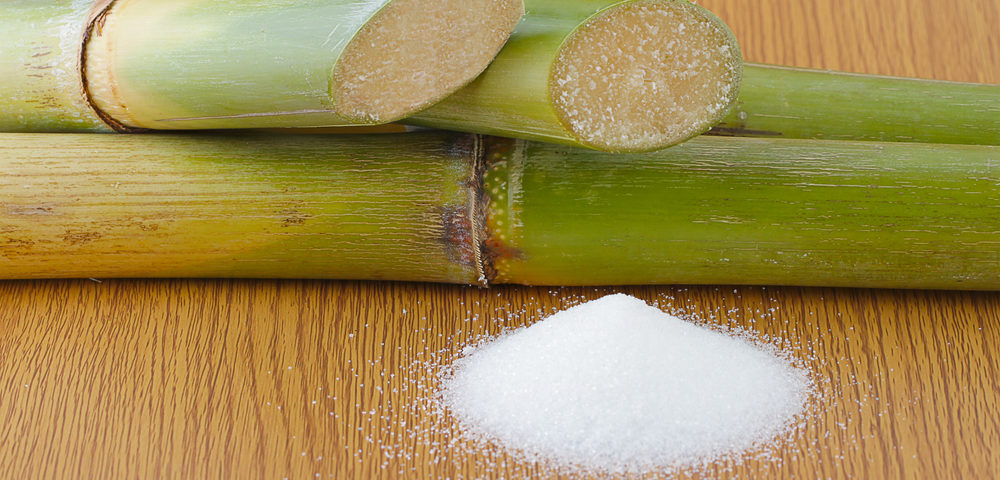The Environmental Impact of Growing Sugar and Cane in Various Regions
The Environmental Impact of Growing Sugar and Cane in Various Regions
Blog Article
How Walking Cane Sugar Processing Chemicals Improve Sugar Top Quality and Return
The duty of handling chemicals in walking cane sugar production is pivotal, as they directly influence both the high quality and return of the last product. The consolidation of activated carbon and enzymes offers to enhance the breakdown of complicated sugars, ultimately leading to a purer and higher-quality sugar.
Summary of Walking Cane Sugar Handling
Walking cane sugar handling involves a series of vital actions that change raw sugarcane into refined sugar items. The procedure begins with harvesting, where mature sugarcane stalks are cut and transferred to refining centers. Upon arrival, the walking stick undergoes washing to get rid of contaminations such as dirt and plant materials.
Complying with washing, the walking stick is squashed to extract the juice, which consists of sucrose - sugar and cane. This juice goes through explanation, where lime and heat are utilized to eliminate staying pollutants and non-sugar components. The cleared up juice is after that vaporized to focus the sugar content, resulting in the formation of thick syrup
Next, the syrup is crystallized via a regulated air conditioning process, resulting in sugar crystals. These crystals are divided from the staying syrup in centrifuges. The raw sugar acquired is typically brown because of residual molasses material. To achieve polished sugar, further purification steps are used, including washing, re-crystallization, and drying.
The last product is either packaged as raw sugar or additionally refined right into white sugar, satisfying various customer and commercial demands. This comprehensive collection of actions guarantees the production of premium sugar, essential for numerous applications in food and drink sectors.
Trick Handling Chemicals Made Use Of
The production of refined walking cane sugar relies upon numerous processing chemicals that play considerable functions at various stages. Among the most critical are lime (calcium hydroxide), phosphoric acid, and sulfur dioxide. Lime is primarily utilized throughout the explanation stage to counteract level of acidity and speed up contaminations, resulting in a more clear juice. This action is vital for enhancing the general quality of the removed juice.
Phosphoric acid offers a dual function; it enhances the information process and assists in the removal of color-forming compounds, adding to a higher pureness of the end product. In addition, sulfur dioxide functions as a lightening agent, permitting the efficient elimination of unwanted pigments and boosting the color of the sugar.
Other significant chemicals consist of turned on carbon, which is utilized for further decolorization, and enzymes that facilitate the failure of complex sugars into less complex types, thus boosting yield. The cautious option and application of these handling chemicals are vital for optimizing the effectiveness of sugar removal and refining processes, eventually causing an extra constant and better sugar item.

Influence On Sugar Top Quality
Just how do processing chemicals affect the top quality of polished sugar? The introduction of different chemicals in the walking stick sugar processing stage substantially improves the purity and overall quality of the last item.
Additionally, using turned on carbon and ion-exchange resins during the refining process plays an important function in removing off-flavors and unwanted odors, contributing to the sugar's sensory profile. This improvement not only raises the aesthetic and organoleptic top qualities however also enhances the service life by lessening microbial task connected with pollutants.
Furthermore, the specific application of these chemicals ensures that the sugar shows a consistent grain dimension and flowability, which are crucial qualities for both industrial applications and customer choices. Overall, the critical use handling chemicals is fundamental in attaining top notch refined sugar that satisfies sector requirements and customer expectations.
:max_bytes(150000):strip_icc()/canesugarBURCUATALAYTANKUT-42971cd7f8b84b4fb756984c18728339.jpg)
Enhancing Return Effectiveness
Enhancing return performance in cane sugar processing includes optimizing numerous stages of production to take full advantage of the quantity of sugar removed from raw walking cane. One vital facet is the selection and application of suitable handling chemicals, which can help with the breakdown of cell walls and improve sugar release throughout removal. Chemicals such as acids and enzymes play a vital function in this process by hydrolyzing polysaccharides and liquifying pollutants, thereby enhancing the total extraction performance.

Routine surveillance and adjustment of processing criteria are necessary to maintain efficiency throughout production (sugar and cane). By employing these methods, sugar producers can not only raise the quantity of sugar acquired yet additionally minimize waste and reduced manufacturing costs, contributing to a much more successful and lasting sugar processing procedure
Advantages for Consumers and manufacturers
Walking stick sugar handling chemicals offer considerable advantages for both producers and consumers, developing an extra lasting and reliable sector. For manufacturers, these chemicals enhance extraction procedures, leading to higher yields and enhanced sugar top quality.
For customers, the benefits are equally compelling. The enhanced quality of sugar translates to better taste and consistency in foodstuff. In addition, the use of handling chemicals can result in an extra steady supply of sugar, alleviating scarcities and rate spikes that can happen due to ecological elements or market variations. In addition, the improvements in production techniques add to sustainability campaigns by reducing source usage and waste generation, interesting eco aware customers.
Conclusion

The function of handling chemicals in cane sugar manufacturing is pivotal, as they directly influence both the top quality and return of the last item (sugar More Help and cane). The unification of triggered carbon and enzymes serves to optimize the break down of complicated sugars, inevitably leading to a purer and higher-quality sugar.Walking stick sugar processing involves a collection of important actions that change raw sugarcane into polished sugar products.Enhancing yield performance in cane sugar processing includes enhancing different stages of manufacturing to make best use of the quantity of sugar removed from raw walking stick.Walking stick sugar handling chemicals play a vital function read here in enhancing both sugar top quality and return
Report this page